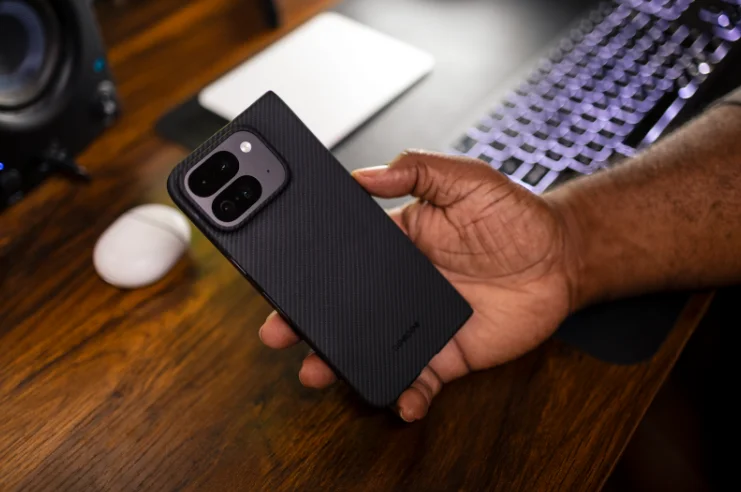
There are 3.95 plus million apps on the Google Play Store, proving the incredible scope of Android app development. With Android dominating the global smartphone market, creating your own app can open doors to innovation and entrepreneurship.
This guide simplifies Android app creation as it brings insights and techniques to help you build your first app successfully.
Why Learn to Build Android Apps?
Android indeed powers billions of devices worldwide by providing immense opportunities for developers to create impactful solutions. This states that no matter if you’re building an app for personal use or the global audience, the Android ecosystem has expansive prospects for innovation and profit.
6 Steps to Make an Android App
Step 1: Understand the Basics of Android App Development
Familiarize yourself with the key components and technology of Android app creation before immersing into coding:
- Programming Languages:
- Java: Traditional language for Android development, widely supported.
- Kotlin: Official language for Android, concise and developer-friendly.
- Development Tools:
- Android Studio: The official IDE for Android development, offering powerful tools for coding, debugging, and testing.
- Emulator: Simulates Android devices for app testing.
- Design Guidelines: Follow Google’s Material Design principles for creating intuitive and visually appealing apps.
Step 2: Set Up Your Development Environment
You’ll need the right tools installed on your computer to create an Android app:
| Component | Purpose |
| Android Studio | Integrated Development Environment (IDE) |
| JDK (Java Development Kit) | Required to write and compile Java code for Android apps. |
| Android Emulator | Simulates Android devices for app testing without physical hardware. |
| Gradle | Build automation tool used with Android Studio. |
| XML (Extensible Markup Language) | Defines UI components and layouts. |
| Kotlin | Official language for Android development. |
| Firebase | Provides backend support for app features like authentication and database. |
Step 3: Plan Your App
A successful app starts with detailed and well-streamlined planning. Concentrate on defining the purpose before writing a single line of code. Think about the features you want to implement in your app and also research thoroughly about the target audience of your app. This clarity sets the foundation for everything that follows. Also, do not forget to consider the following questions:
- What problem does my app solve?
- Who will use it?
- What are the must-have features?
Use tools like Figma or Adobe XD to create wireframes once all these parameters are defined. These tools help you to visually map out your app’s interface and provide a seamless user experience. Your wireframes should detail how users interact with the app by highlighting navigation and core functionality.
Step 4: Start Coding Your App
1. Create a New Project
Open Android Studio and begin by selecting “Create New Project.” Choose a project template that aligns with your app’s needs, such as Empty Activity for a basic app structure. Configure the project details, including:
- App name: The name your users will see.
- Package name: A unique identifier for your app (e.g., com.yourdomain.appname).
- Target Android version: Ensure compatibility with the devices your audience uses.
2. Design the User Interface (UI)
Your app’s interface is the first impression users get and it is your duty to make it highly intuitive and visually appealing. Employ XML to define layouts in the activity_main.xml file. Here, you’ll add UI components like:
- Buttons: To initiate actions.
- Text fields: For user input.
- Images: To enrich the app’s visual appeal.
Experiment with design principles such as consistency, readability, and responsiveness to make your app shine on all screen sizes.
3. Add Functionality
The logic of your app is built using Kotlin or Java. In this phase, you’ll:
- Write code to implement core functionality.
- Connect the UI components to the back-end logic.
For example, link a button in the UI to perform specific actions when clicked. Test and refine the code to make sure that it functions as intended.
Step 5: Test Your App
Testing is super vital to delivering a flawless user experience. Android Studio provides tools to test your app efficiently:
- Emulator: Simulate various devices and scenarios directly in Android Studio.
- Physical Device Testing: Connect an Android device via USB to test real-world performance.
Conduct the following types of testing:
- Unit Testing: Validate individual features and also make sure that they work as expected.
- UI Testing: Test the app’s interface for ease of use and responsiveness.
Testing across multiple devices and screen sizes provides compatibility and it is also a perfect way to prevent surprises after launch.
Step 6: Publish Your App on Google Play
Publishing your app on the Google Play Store is the ultimate gateway as it gives visibility to millions of potential users. Follow these steps to release your app:
- Create a Google Play Console Account: Register and set up your account to manage your app listings.
- Generate a Signed APK or App Bundle: Use Android Studio to package your app securely for release.
- Submit App Details: Provide essential details, including:
- App name and description.
- Screenshots and feature graphics.
- Pricing and distribution preferences.
- Publish for Review: Submit your app for Google’s review procedure. Once approved, there is no force that can stop you and in no time your app will be live on the Play Store.
Key Takeaways for Android App Creation
- Master the basics of programming and Android Studio.
- Plan your app’s purpose, audience, and features meticulously.
- Prioritize user experience by adhering to Material Design principles.
- Test thoroughly to ensure performance and compatibility.
- Stay revised with all the exclusive and important Android trends and tools.
You can turn your app idea into a tangible reality of carving a credible android app by following this guide with utmost precision. Remember, creating an Android app is not just about coding, in fact, it is all about solving problems. It is also about providing value and creating meaningful user experiences via your application. You will be ready to make your mark in the world of android app development with the right mindset and tools.

The Hidden Business Power of Storytelling Through Books

Diamond Painting Apps & Digital Tools for 2025 Artists

Meeting Global Tastes: The Versatility of Commercial Tortilla Makers

Accelerating drug discovery through the DEL-ML-CS approach

AI in Marketing Is No Longer a Buzzword — It’s the Strategy

The Full Guide To Penetration Testing

Pixel 10 Pro Fold Case: Why Choose Aramid Fiber?

MT4 for Mac vs Windows: Which Version Works Better for Traders








